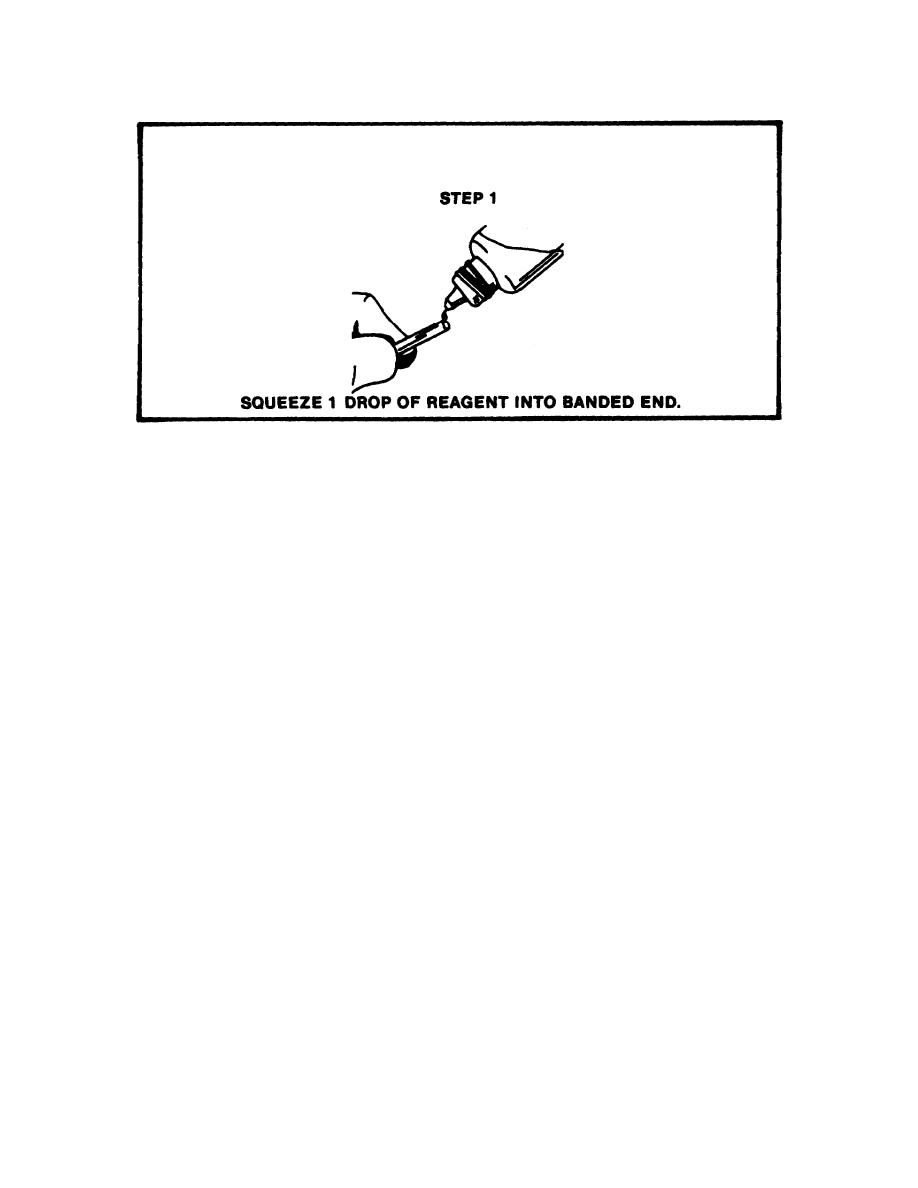
Lesson 3/Learning Event 1
FIGURE 27. SQUEEZE ONE DROP OF REAGENT
INTO BAND END OF BLUE-BAND
DETECTOR TUBE.
Step 3. If a purple-blue ring appears, H, HD, HN, or HT is present If a red-brown ring appears, CX
is present (a light brown color which fades within 15 seconds is not a positive test).
Test for L, ED, or MD. This test uses a yellow-band detector tube. It will determine whether L, ED,
or MD is present in the area.
Step 1. Snap both ends from a yellow-band detector tube at the scorings and press the unmarked
end of the detector tube into the adapter. Then, with the detector tube pointing down, compress the
bulb 60 times.
Step 2. Remove the detector tube from the adapter and observe the color. If a blue-green ring is
observed, ED or a high concentration of L is present.
Step 3. Squeeze one drop of reagent solution from the blue-marked bottle into the banded end of the
detector tube. If a blue or blue-green ring appears, L, ED, or MD (singly or in combination) is
present.
Test for CG. A green-band detector is used in this test to determine if CG is present in the area.
Step 1. Snap both ends from a green-band detector tube at the scorings and press the unmarked end
of the tube into the adapter. Then, with the detector tube pointing down, compress the bulb 60
times.
Step 2. Remove the detector tube from the adapter and observe the color. If the green ring appears,
CG is present.
Test for AC. A red-band detector tube is used in this test. It will determine if AC is present in the
area.
55


 Previous Page
Previous Page
